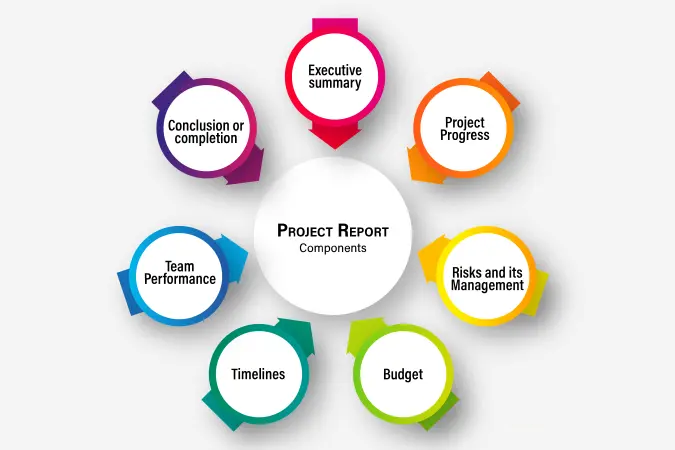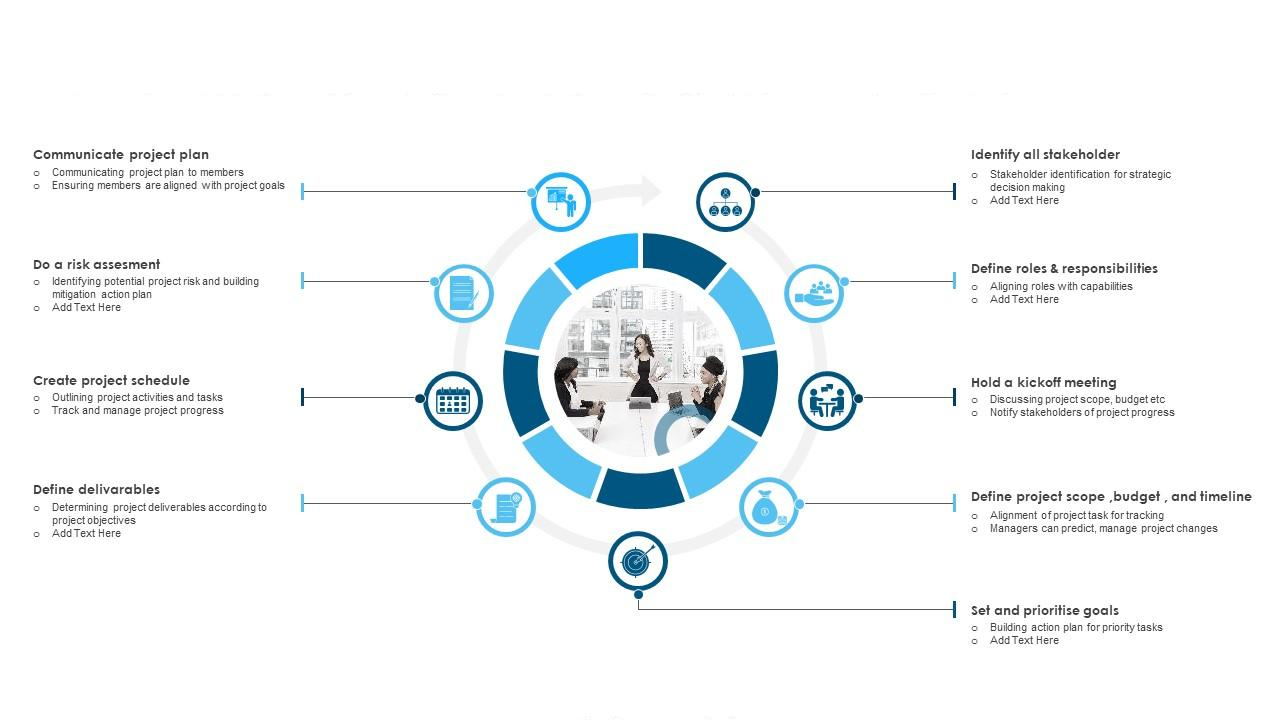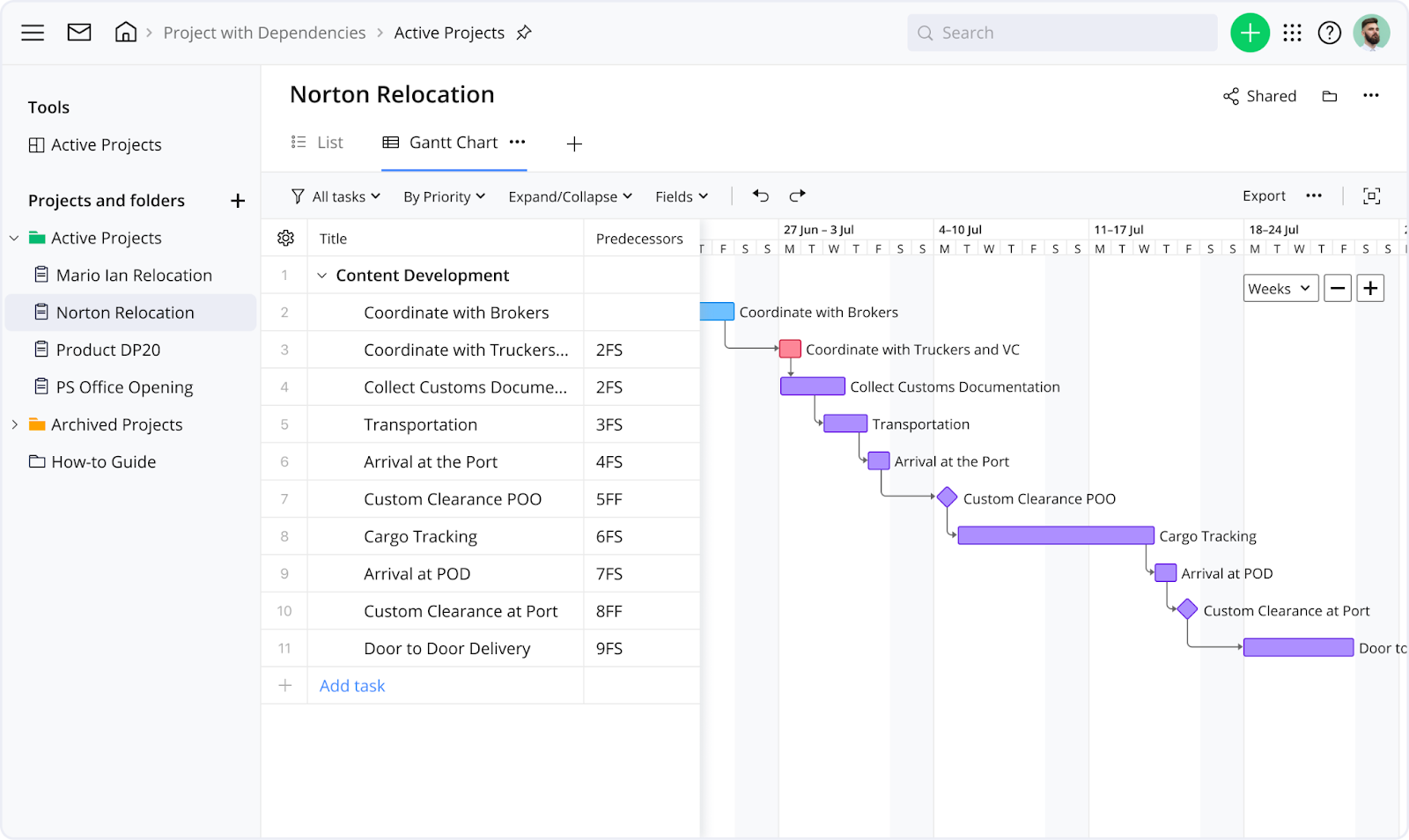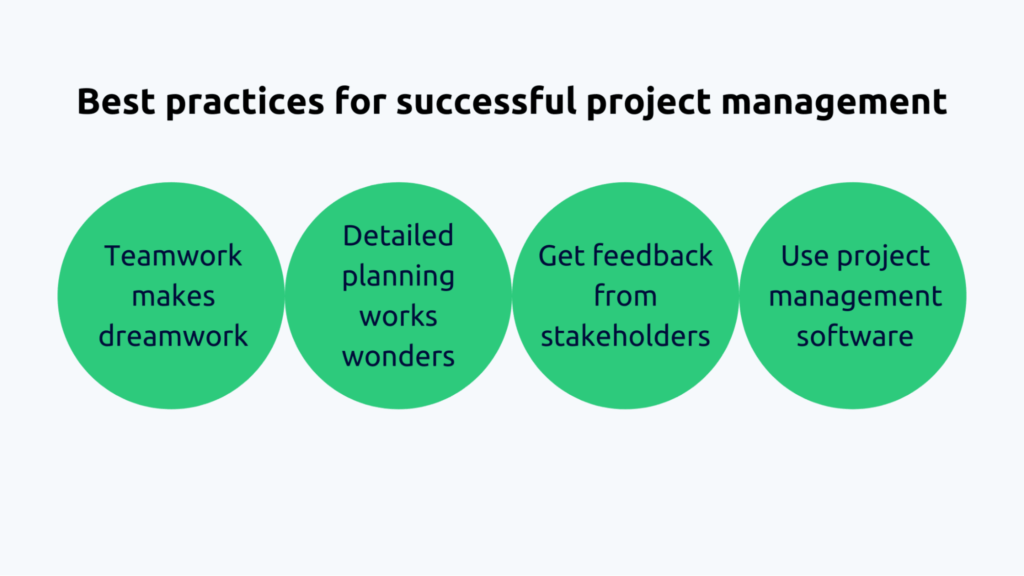Nailing down an effective project management report isn't rocket science, but it does require a keen eye on a few pivotal steps. Kick things off by gathering the nitty-gritty data—think project status, risk levels, overall health, and budget. It's all about getting your ducks in a row. Next up, lay out your findings in a clear, logical fashion. Think of it as building a roadmap that anyone can follow. Wrapping things up means presenting your findings in a way that speaks volumes to stakeholders—clear, concise, and on-point. Keep the updates rolling and reviews thorough; it's the backbone of stellar project communication.
Understanding the importance of a project management report
When preparing your project management report, it's crucial to consider the structure and best practices for effective communication. One of these best practices can be found in understanding how your project management office operates. This knowledge can then be applied to your report, enhancing its impact and effectiveness.
A project management report is your secret sauce to keeping everyone in the loop. It's what keeps the project's pulse, organizing all the essential bits chronologically for simplicity and smooth sailing.

Whether it's the current project status or the nitty-gritty of project risks and budgets, this report has got you covered. And let’s not forget the project closure report—it's your curtain call, documenting the wins and lessons learned. In short, this report isn't just helpful; it's crucial for any project manager worth their salt.
Role of project management reports in agency operations
In the thick of agency operations, project management reports are the glue that holds everything together. They're key to transparent communication, letting all stakeholders get a clear snapshot of where things stand—risks, health, and all. Proper preparation and a killer format can make or break your project reporting game. These reports are the bread and butter for planning and tracking, enabling you to navigate through the project seas smoothly.
Benefits of effective project management reporting
Effective project management reporting is like having a crystal ball. It lets you peek into the project's future, helping you steer clear of potential icebergs. The perks? Transparent decision-making, with stakeholders getting the lowdown on project health in real-time. It's about spotting issues early with savvy risk reports and managing your budget like a pro. With insights at your fingertips, managing resources and making sharp decisions becomes a walk in the park.
Identifying the key elements of a project management report

Think of a project management report as your project's biography. It tells the story of where your project stands today and what battles it might face tomorrow. Essentials include slick preparation, a snapshot status report, and top-notch communication strategies. These elements are the linchpins in keeping your project narrative clear and engaging for everyone involved.
Project summary and objectives
Our mission? To ace project management by enhancing our reporting techniques. We're all about effective communication of project statuses and progress to keep every stakeholder in the know. By sharpening our reporting strategies, focusing on health, risks, and budgets, we aim to keep things transparent, accountable, and efficient, especially as we wrap up with our project closure reports.
Project status and progress
Right now, our project management team is knee-deep in preparation. The latest status reports are out, spotlighting key risks and the overall health of the project. This intel is gold—it helps us tackle challenges early and keep our strategy on point. We're keeping a close eye on budget trends and project milestones too. Remember, seamless communication is our ace in the hole for project success.
Risks and issues
Let's face it: project management reports can hit a few snags. Common culprits include iffy data leading to misread signals or delays that throw our timelines for a loop. Rising risk factors need to be on our radar to avoid surprises that could derail our progress. It all boils down to meticulous planning and proactive communication.
Project timeline and schedule
Our project reporting journey starts with setting clear goals and timelines. A balanced report format lights the way, showing us the status, risks, and progress at a glance. This methodical approach under the watchful eye of our project manager ensures that we stay on track, mitigate risks timely, and celebrate our milestones as we close the chapter on our project.
Cost and budget analysis
Keeping tabs on the budget is pivotal. Our reports shed light on financial health and project trajectory, helping us adjust the sails as needed. Regular budget reviews are part of our strategy to keep everything running smoothly, ensuring our financial planning is as sharp as our project goals.
Choosing the right project management reporting tools
Picking the right tools is key to project mastery. Tools that streamline report prep and keep the data flowing are game changers. They enhance our understanding of the project landscape, making sure we're always a step ahead. From keeping stakeholders in the loop to managing risks, the right tools make all the difference.
Microsoft project: A comprehensive solution
Microsoft Project steps up as a powerhouse, smoothing out the report prep process with its intuitive features. It's all about making project management a breeze, from drafting detailed reports to managing communications like a pro. This tool doesn't just support your project goals—it propels them.
Asana: For streamlined task management
Asana shines when it comes to task management. Its robust features support every stage of report preparation, from drafting to final reports. It simplifies project planning and boosts stakeholder communication, ensuring every piece of the project puzzle fits just right.
Basecamp: For improved communication
Basecamp excels in communication, making it a top pick for project managers who value streamlined planning and stakeholder interaction. It enhances report preparation, turning the creation of progress and health reports into a smooth process. With Basecamp, managing project data and communication is a breeze.
Steps to prepare a project management report
Preparing a project management report is like preparing a gourmet meal. It requires meticulous project planning and collection of accurate project data. The report usually begins by identifying the project manager, project stakeholders, and the nature of the project. It’s like listing out the ingredients for your recipe.
The report includes various detailed sections such as project status report, project health reports, and project risk reports. Regular updates are provided through project progress reports. It’s like checking on your meal as it cooks.

Other critical sections like project budget report and project closure report are also incorporated based on their relevancy. The project report format should consider clarity, precision, and project communication management. It’s like presenting your meal in an appealing way.
Step 1: Define the purpose and scope of the report
The primary purpose of this project management report is to provide a comprehensive update on project progress and performance. It’s like setting the table for your meal. The project report format is designed to be user-friendly and informative to project managers, stakeholders and anyone involved in project communication management.
The report aims to assist in project planning and decision-making processes by delivering pertinent project data in a simplified and structured manner. It’s like following a recipe. Project report preparation is managed meticulously to ensure the accuracy, relevancy and timeliness of the information provided.
Overall, the scope of this report extends to every facet of the project, facilitating better project management, communication, and transparency. It’s like ensuring every course of the meal is covered.
Step 2: Gather relevant data and information
In the development of the project management report, essential data must be collected. It’s like gathering your ingredients. This could come from a range of sources such as project status report, project health reports, and project risk reports. These sets of information are crucial as they give an insight into the ongoing activities of the project.
Furthermore, the project report format often includes a project budget report and project progress reports that show the financial health and development rate of the project. It’s like checking the temperature and taste of your meal. The project manager collates these pieces of data and communicates them to project stakeholders to keep them informed.
Thus, in project report preparation, project data is a key resource. It aids in project communication management, informs project planning, and overall helps maintain the transparency of the project. It’s like having a clear recipe to follow.
Step 3: Analyze the data and draw conclusions
After a thorough examination of the project management report, it’s clear that project planning and project communication management significantly impact the project health reports. It’s like tasting your meal and adjusting the seasoning. Besides, a meticulously prepared project report format aids in the meticulous project report preparation.
Notably, project stakeholders place a significant emphasis on project status report, project risk reports, and project budget reports. It’s like your guests enjoying the meal.
As a tangible way to track project progress, project progress reports are paramount, serving as a tool that a project manager and all involved parties can refer to. Thus, the synthesis of accurate project data becomes a crucial part of the process.
Step 4: Organize the information in a logical structure
Project management includes the preparation of various types of reports designed to give stakeholders a clear understanding of the project status. It’s like arranging your meal in a logical order. Among these includes the project management report, a comprehensive document that provides a snapshot of project progress, risks, health and budget.
The project report format is integral to effective project communication management. It should present clear, concise information that aids in decision-making processes. It’s like presenting your meal in an appealing way. The project manager is responsible for this regular project report preparation, systematically organizing project data to report on progress, risks, and other key aspects of the project.
Step 5: Review and refine the report
In the review process for a project management report, it is paramount to inspect the project report format meticulously. It’s like checking your meal before serving. Detailed attention must be given to the project status report, project health reports, and project risk reports. The accuracy and relevance of data in these sections can heavily influence the project’s outcomes.
During project report preparation, a project manager must ensure clear project communication management is in place. It’s like communicating with your guests about the meal. Timely updates to project stakeholders are as crucial as acquiring required data for the report.
Also, the project closure report, project budget report, and project progress reports must reflect the overall project planning and execution status accurately. It’s like serving the meal and enjoying the fruits of your labor. Incorporating precise project data aids in providing a comprehensive overview of the project’s performance. It’s like receiving compliments on a meal well prepared.
Best practices for effective project management reporting

Diving into effective project management reporting, it's all about keeping tabs with crystal-clear reports—health checks, status updates, and risk assessments. Here’s the drill for keeping it top-notch:
First off, craft a project report format that's straightforward and user-friendly. You want something that everyone involved can grasp without scratching their heads—this means less mess and zero confusion. Next, weave project communication management into your reporting fabric. This keeps the project manager and the squad on the same page. Finally, nail the accuracy and timing of your reports. They need to mirror the real deal of your project's journey—no sugarcoating, just the hard facts.
Keeping reports simple and clear
Effective project management screams for reports that are not only clear but also sharp and to the point. Your project report format should be stripped down to the essentials: a neat overview of the status, health, and risks. This simplicity fosters solid communication between the project manager and stakeholders.
Part of prepping your reports involves documenting the project's financial flow and progress clearly. This boosts transparency and sharpens your project planning skills. A well-structured report is your best friend—it captures the project's pulse accurately and communicates valuable insights without a hitch.
Regularly updating the report
Regular updates are the backbone of stellar project management. With a spot-on report format, a project manager can effectively pull the strings on the project's status and essential metrics like health and risks.
Preparing these updates is a cornerstone of effective project communication. It ensures everyone’s on the same page, minimizing bumps down the road. Regularly refreshed data on your budget and progress paves the way for smooth project planning and smart decision-making. Every shred of project data plays a role in steering the project toward a successful conclusion.
Using visuals for better understanding
When it comes to project management, visuals are not just fluff—they're crucial. They simplify complex information, making it snackable for everyone involved. Graphics are particularly handy in reports on project health or progress, offering a snapshot that’s easy to digest.
Visual elements elevate project communication, allowing stakeholders to catch on quickly and make informed decisions. Whether it’s risk assessments or budget details, dressing them up with the right visuals can make or break your strategic moves. So, it’s a smart play to incorporate effective visuals into your project reports during both the planning and execution phases.
Conclusion: The impact of effective project management reports on agency success
Effective project management reports are gold—they lay the groundwork for agency triumph. These reports offer a 360-view of the project's planning and progress, serving as a solid base for strategic decision-making. Keeping a close eye on project reports—monitoring everything from progress to risks and closures—ensures that stakeholders have their fingers on the pulse of accurate project data.
By sticking to a precise project report format and diligent preparation, you ensure that your financial and progress insights are spot-on, boosting the overall project management game. With these reports crafted and interpreted with care, the role of a project manager becomes significantly more effective, driving agency success through informed leadership and proactive management.







